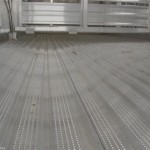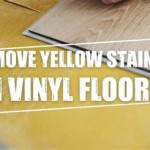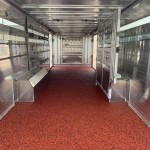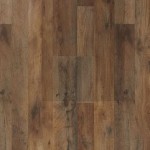What Are The Disadvantages Of Wood Flooring In Kitchens?
Wood flooring presents a classic and aesthetically pleasing option for many homeowners. Its natural warmth, varied grain patterns, and potential for refinishing contribute to its enduring popularity. However, when considering wood flooring for a kitchen environment, it is crucial to weigh the disadvantages against the advantages. Kitchens present unique challenges that can compromise the longevity and appearance of wood floors. This article will delve into the specific drawbacks of installing wood floors in kitchens, providing a comprehensive overview of the potential issues.
Susceptibility to Water Damage and Moisture
One of the primary concerns associated with wood flooring in kitchens is its vulnerability to water damage and moisture exposure. Kitchens are inherently wet environments. Spills from cooking, dishwashing, and leaky appliances are commonplace. Unlike tile or vinyl flooring, wood is a porous material that readily absorbs water. Prolonged exposure to moisture can cause the wood to swell, warp, and buckle. This damage can be unsightly and costly to repair, potentially requiring complete floor replacement in severe cases.
Even seemingly minor spills can pose a threat. If left unattended, water can seep between the planks, leading to insidious damage beneath the surface. This can create a breeding ground for mold and mildew, further compromising the integrity of the flooring and potentially posing health risks to occupants. Regular cleaning with excessive water can also contribute to moisture accumulation, particularly around the edges of the planks.
The type of wood also influences its resilience to moisture. Softer woods are generally more susceptible to water damage than harder, denser varieties. While certain finishes can provide a degree of water resistance, they are not entirely waterproof and require regular maintenance and reapplication. Ultimately, the kitchen environment presents a constant challenge to the protective qualities of any wood finish.
Furthermore, humidity fluctuations within the kitchen can impact wood flooring. Changes in temperature and humidity can cause the wood to expand and contract, leading to gaps between the planks. Over time, this can weaken the floor’s structure and create an uneven surface. Controlling humidity levels through proper ventilation and climate control can mitigate this risk, but it requires consistent effort and attention.
Vulnerability to Scratches and Dents
Kitchens are high-traffic areas where sharp objects, dropped utensils, and heavy appliances pose a constant threat to the surface of wood flooring. The daily activities of cooking, cleaning, and food preparation can easily lead to scratches, dents, and other forms of surface damage. While minor scratches can often be buffed out, deeper gouges may require professional repair or even plank replacement.
The hardness of the wood species plays a significant role in its resistance to scratches and dents. Softer woods are more prone to damage than harder woods. Even with a protective finish, the surface can be vulnerable to the impact of dropped items. Pets, especially those with long nails, can also contribute to scratches and wear on the floor. Regular trimming of pet nails and the use of area rugs can help to minimize this type of damage.
The placement of heavy appliances, such as refrigerators and stoves, can also create indentations in the wood floor. Using protective mats or furniture pads under these appliances can help to distribute the weight and prevent permanent damage. However, even with these precautions, the constant pressure can still lead to some degree of indentation over time.
The type of finish applied to the wood floor also influences its scratch resistance. Polyurethane finishes are generally more durable and resistant to scratches than oil-based finishes. However, even the most durable finishes can be scratched by abrasive materials or sharp objects. Regular sweeping and vacuuming are essential to remove dirt and debris that can contribute to surface damage.
Cleaning and Maintenance Requirements
Maintaining wood flooring in a kitchen requires diligent cleaning and maintenance to prevent damage and preserve its appearance. Unlike tile or vinyl, wood floors cannot be simply mopped with water and detergent. Excessive moisture can damage the wood, and harsh cleaning chemicals can strip the finish. Instead, wood floors require specialized cleaning products and techniques.
Regular sweeping or vacuuming is essential to remove dirt, dust, and debris that can scratch the surface. Using a soft-bristled broom or a vacuum with a brush attachment is recommended to avoid scratching the floor. Spills should be cleaned up immediately with a damp cloth to prevent them from soaking into the wood. Avoid using abrasive cleaners or scouring pads, as these can damage the finish.
Periodic cleaning with a wood floor cleaner is necessary to remove accumulated dirt and grime. Choose a cleaner specifically designed for wood floors and follow the manufacturer's instructions carefully. Avoid using excessive water when cleaning, and be sure to dry the floor thoroughly afterward.
Over time, the finish on wood floors can become worn and scratched. Refinishing is necessary to restore the floor's appearance and protect the wood from damage. Refinishing involves sanding down the old finish and applying a new coat of sealant or varnish. This process can be time-consuming and expensive, but it can significantly extend the life of the floor. The frequency of refinishing depends on the amount of traffic the floor receives and the type of finish used.
In addition to regular cleaning and refinishing, preventive maintenance is also important. Using area rugs in high-traffic areas can help to protect the floor from scratches and wear. Placing mats at entrances can help to prevent dirt and debris from being tracked onto the floor. Avoiding wearing shoes with sharp heels can also help to minimize surface damage.
Potential for Staining and Discoloration
The porous nature of wood makes it susceptible to staining and discoloration from spilled liquids, especially those containing dyes or acids. Common kitchen spills, such as red wine, coffee, and tomato sauce, can leave permanent stains on wood flooring if not cleaned up promptly. The type of wood and the finish applied can influence the severity of staining, but even with a protective finish, stains can still occur.
The location of the wood floor within the kitchen can also affect its susceptibility to staining. Areas near the stove and sink are more likely to experience spills and splatters, increasing the risk of staining. Placing rugs or mats in these areas can help to protect the floor from spills.
Discoloration can also occur over time due to exposure to sunlight. UV rays can cause the wood to fade or change color, particularly in areas that receive direct sunlight. Using curtains or blinds can help to reduce the amount of sunlight that reaches the floor.
Certain cleaning products can also cause discoloration if they contain harsh chemicals or abrasives. Always use cleaning products specifically designed for wood floors and test them in an inconspicuous area before applying them to the entire floor.
Removing stains from wood flooring can be challenging. Prompt action is essential to minimize the risk of permanent staining. Blot up spills immediately with a clean cloth and avoid rubbing the stain, as this can spread it further. For stubborn stains, try using a wood stain remover or consulting with a professional floor cleaner.
Cost Considerations
The initial cost of installing wood flooring in a kitchen can be significantly higher than alternative flooring options, such as tile or vinyl. The price of wood flooring varies depending on the species of wood, the grade, and the installation method. Harder woods, such as oak and maple, tend to be more expensive than softer woods, such as pine. The cost of installation can also vary depending on the complexity of the project and the labor rates in the area.
In addition to the initial cost of installation, there are also ongoing maintenance costs to consider. Wood floors require regular cleaning, refinishing, and potential repairs, which can add up over time. These costs should be factored into the overall budget when considering wood flooring for a kitchen.
While wood flooring can add value to a home, it is important to consider whether the investment is justified for a kitchen environment. In areas where moisture and spills are common, alternative flooring options may be more cost-effective in the long run.
It is also important to consider the cost of potential repairs or replacements due to water damage, scratches, or staining. These unexpected costs can significantly increase the overall cost of owning wood flooring in a kitchen.
Comparing the costs of different flooring options and factoring in both initial and ongoing expenses is essential to making an informed decision about whether wood flooring is the right choice for a kitchen.

Pros And Cons Of 5 Popular Kitchen Flooring Materials

Are There Any Disadvantages Of Wood Flooring Greyspace

7 Disadvantages Of Laminate Flooring Singapore

The Advantages And Disadvantages Of Wood Flooring Styles In Kitchens Bathrooms Singapore

Kitchen Flooring Ideas Tile Vs Hardwood Pros And Cons Naperville Roofing Construction

Engineered Wood Floors In Kitchen Pros And Cons Beyond Blog

What Are The Pros And Cons Of Hardwood Flooring Riverbend Interiors

The Risks And Disadvantages Of Vinyl Flooring City Floor Supply Blog

Hardwood Vs Tile Kitchen Flooring A Comprehensive Comparison Ranney Blair Weidmann

Kitchen Flooring Ideas Tile Vs Hardwood Pros And Cons Naperville Roofing Construction
Related Posts








